How to reply to a complaint letter template
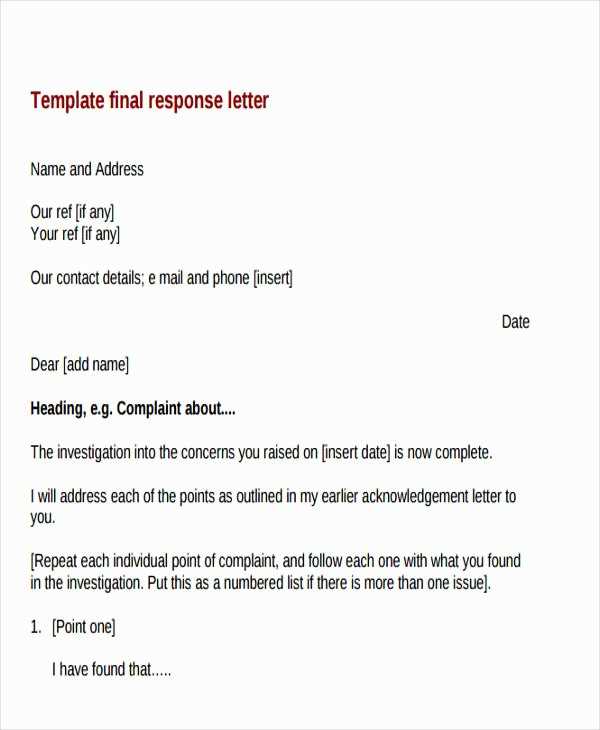
Responding to a complaint letter requires a clear, empathetic, and professional approach. Acknowledge the issue raised and show genuine concern. Start by apologizing for the inconvenience the customer experienced and ensure them that their feedback is taken seriously.
Next, address the specific points mentioned in the letter. Offer an explanation or solution where appropriate. Avoid being defensive; instead, focus on providing a resolution or a clear action plan. This shows you are committed to improving and meeting customer expectations.
Conclude the response by inviting the customer to reach out with any further concerns. A polite, solution-oriented closing message can help rebuild trust and maintain a positive relationship with the customer.
Understanding the Key Elements of a Complaint Letter Response

Address the complaint directly and acknowledge the issue raised by the customer. Start by expressing your understanding of their frustration, showing empathy without being overly formal. Keep the tone calm and positive while addressing the core of the complaint.
1. Acknowledge the Issue
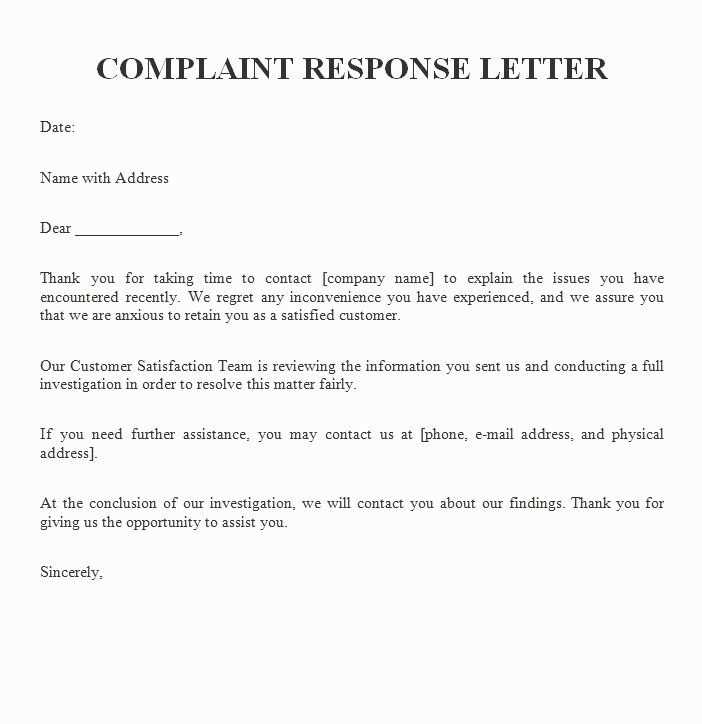
Begin by acknowledging the customer’s experience and the inconvenience caused. Recognize the specifics of their complaint, whether it’s about a product defect, poor service, or delayed delivery. Avoid general statements and reference the complaint details clearly to show you understand the situation.
2. Offer a Solution or Explanation
Next, provide a clear solution or explanation. If the issue is fixable, explain what steps you’re taking to resolve it. If it’s related to a policy or a misunderstanding, offer a clear explanation without sounding defensive. Make sure the customer knows their concern is being addressed and action is being taken.
End by providing a way for the customer to reach out for further clarification if necessary, and express your commitment to maintaining their trust. Always close on a note that leaves the door open for future communication and satisfaction.
How to Acknowledge the Issue and Express Empathy
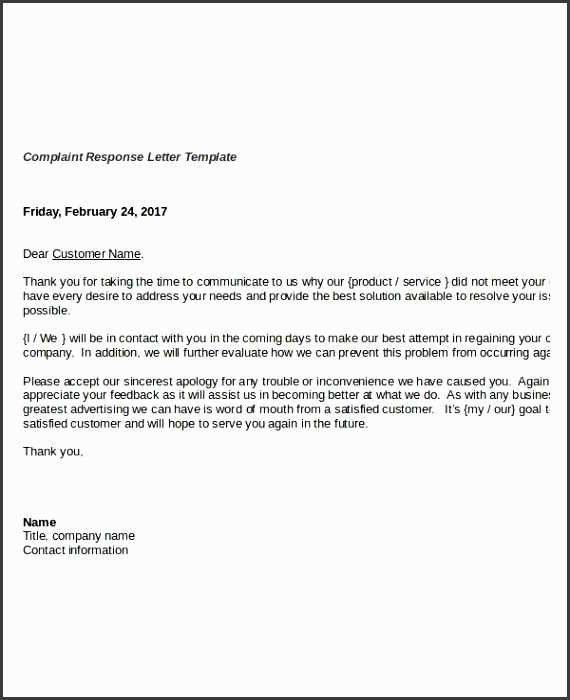
Begin by directly acknowledging the issue raised in the complaint. Clearly reference the specific concern or problem so the customer knows their message has been heard. This reassures them that their concerns matter to you.
Be Specific About the Issue
For example, if the complaint involves a delayed delivery, address it by stating, “We understand that your delivery was delayed, and we apologize for the inconvenience this caused.” This shows you’re focused on the customer’s experience and understand the impact of the issue on them.
Show Understanding and Empathy
Empathize with their situation by putting yourself in their shoes. Express genuine concern for how the issue has affected them. For example, “I can imagine how frustrating it must have been to wait longer than expected for your order.” This approach helps build rapport and lets the customer know that their frustration is acknowledged.
Make it clear that you take their concerns seriously, and reassure them that you are committed to resolving the issue. You can say, “I want to ensure that this situation is resolved to your satisfaction,” which demonstrates your willingness to act on their behalf.
Offering a Solution: Crafting a Response That Addresses the Complaint
Directly address the specific issue raised by the customer. Clearly explain how you plan to resolve the problem or what steps are being taken. Providing clear, actionable steps helps to restore trust and shows commitment to resolving the matter.
Propose Immediate Steps
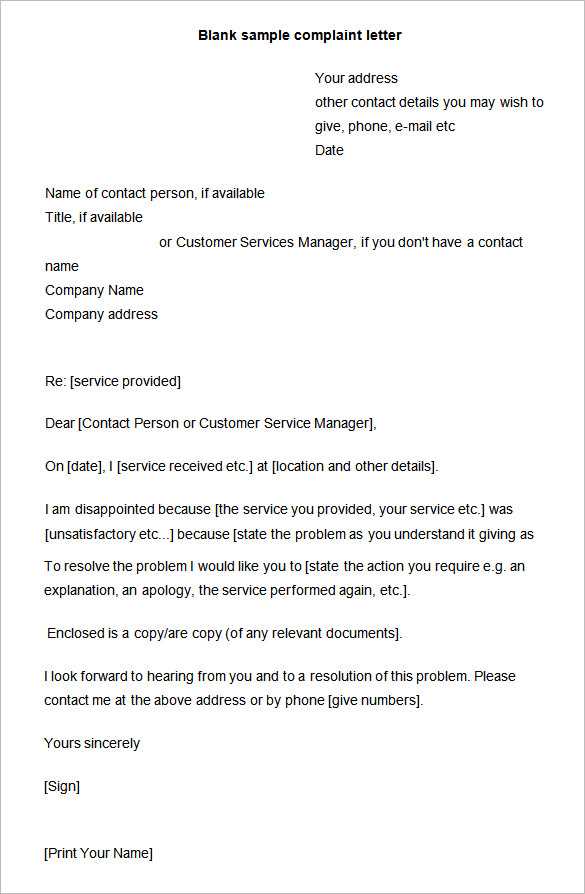
Outline any immediate actions that are being taken to resolve the issue. Whether it’s a refund, replacement, or service correction, the customer should feel that their concern is being handled without delay. If possible, provide a timeline for when they can expect the resolution.
Offer Compensation if Appropriate
In some cases, offering compensation or a goodwill gesture can go a long way in maintaining a positive relationship. Whether it’s a discount, free service, or other benefits, this can demonstrate your commitment to customer satisfaction.
Ensure the tone is empathetic and solution-oriented. Acknowledge the inconvenience caused and reassure the customer that their complaint is taken seriously.
Using Professional Tone and Language in Your Reply
Maintain a clear and polite tone throughout your response. Address the issue without sounding defensive or dismissive. Acknowledge the customer’s frustration or concern, but focus on finding a solution rather than dwelling on the problem.
Use respectful language that reflects understanding and a willingness to help. Avoid jargon or overly complex terms that could confuse the reader. Keep your language simple, direct, and courteous.
| Do | Don’t |
|---|---|
| Use polite greetings like “Dear [Customer Name]” or “Hello [Customer Name]” | Avoid being too casual or informal, e.g., “Hey!” or “What’s up?” |
| Express gratitude: “Thank you for bringing this to our attention.” | Don’t ignore or downplay the customer’s concerns. |
| Offer solutions: “We are working on this issue and will update you shortly.” | Don’t make empty promises or vague statements like “We’ll see what we can do.” |
| Use neutral language: “We understand your concern and are addressing it immediately.” | Avoid blaming the customer or other parties. |
Using a balanced approach helps to convey professionalism while showing empathy. Keep your sentences clear and avoid emotional or inflammatory language. It’s not just what you say, but how you say it that matters in resolving conflicts effectively.
How to Apologize Effectively Without Admitting Fault
When responding to a complaint, acknowledge the other person’s feelings without accepting blame. Start by expressing empathy for their experience. Use phrases like “I understand how frustrating this must be” or “I can see why this situation is upsetting.” These show you are listening and care about their perspective.
Maintain a neutral tone and avoid language that could be interpreted as an admission of guilt. Instead of saying “I’m sorry we made a mistake,” try “I’m sorry for any inconvenience this has caused.” This conveys regret without admitting fault. Focus on the outcome or the impact, not on assigning blame.
Offer a solution or outline steps you’re taking to prevent similar issues in the future. For example, “We are reviewing our process to ensure this does not happen again.” This shifts the focus from fault to improvement, showing you are taking responsibility for the resolution without admitting fault.
Keep the conversation professional, clear, and forward-looking. By emphasizing your commitment to resolving the issue and maintaining a positive relationship, you can address the complaint while protecting your position.
Steps to Follow After Sending Your Reply to Ensure Resolution
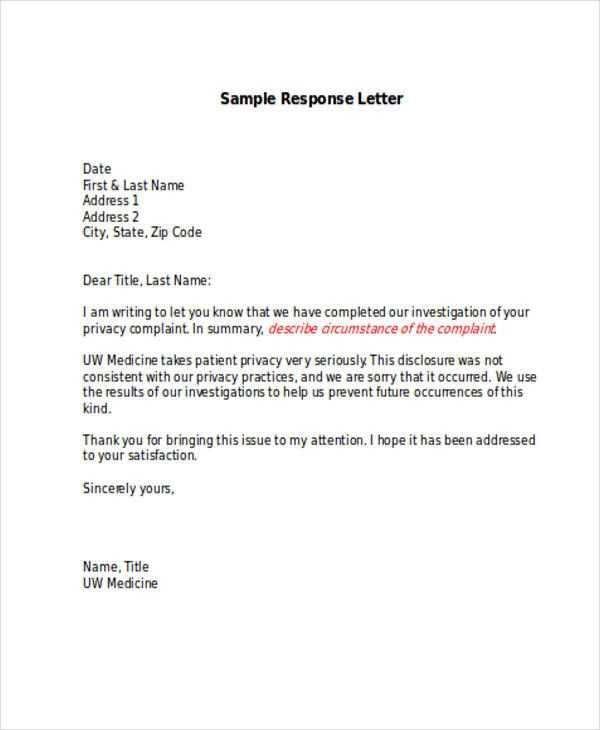
Monitor the response carefully. Check for any signs of dissatisfaction or unanswered questions that could indicate the issue isn’t fully resolved.
- Track Response Time: Set a clear deadline for the customer to respond. If they don’t reply within this time frame, follow up to confirm if the issue has been addressed.
- Confirm Understanding: Make sure the recipient understood the solution. If necessary, ask for feedback on how the issue was handled.
- Provide Additional Assistance: Be open to offering more help if the initial solution was only partial. Suggest further actions or provide additional resources if needed.
- Document All Communication: Keep a record of all exchanges for future reference. This will be helpful if the issue escalates or if further clarification is required.
- Close the Case: Once the issue is fully resolved, confirm the final solution with the customer. Ask if they are satisfied with the resolution, and if so, formally close the case.
By following these steps, you ensure that the issue is addressed thoroughly and that any misunderstandings or remaining concerns are handled promptly.